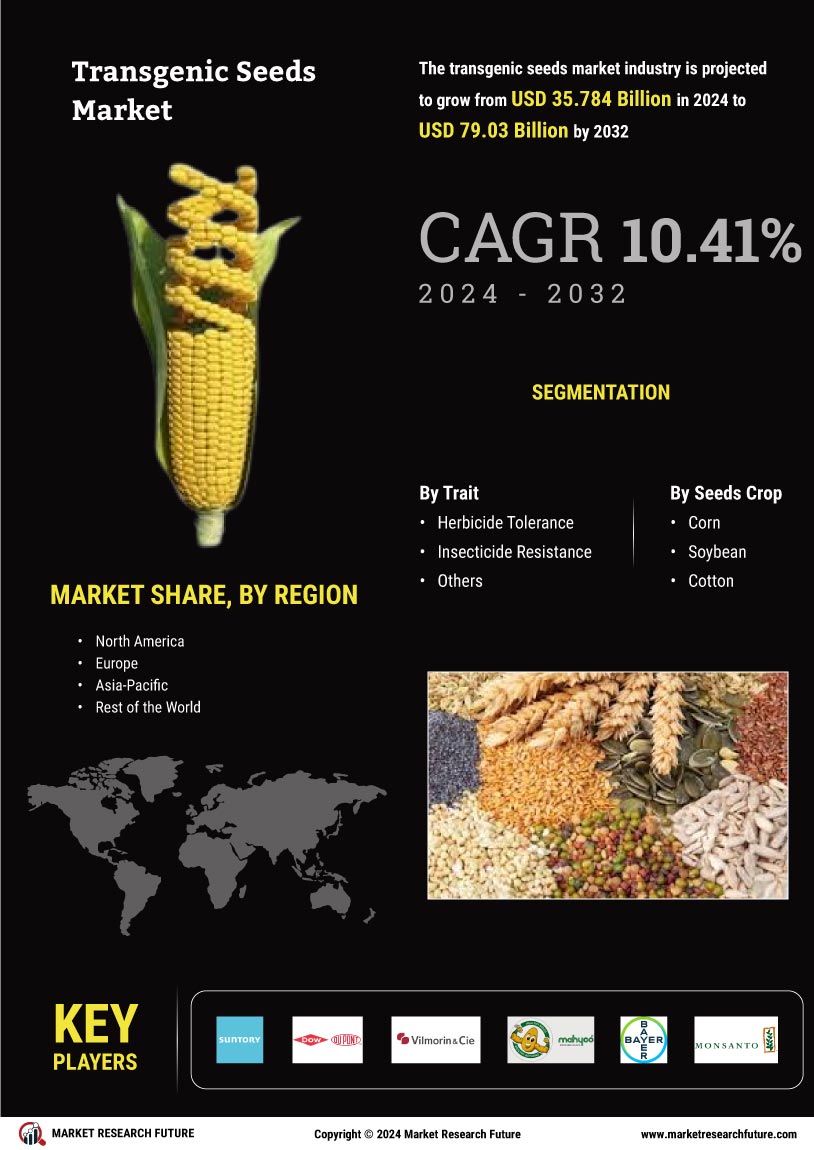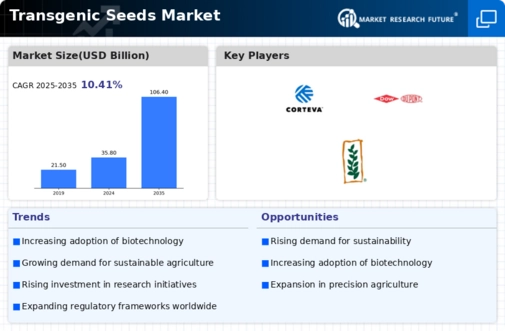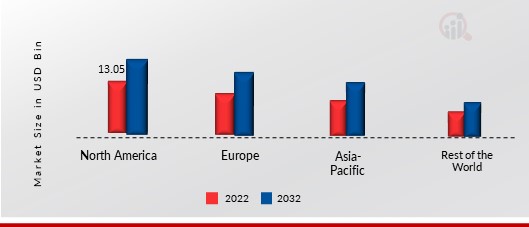Climate Change Adaptation
The Global Transgenic Seeds Market Industry is increasingly driven by the need for climate change adaptation in agriculture. As climate variability poses significant risks to crop production, transgenic seeds offer solutions by enhancing resilience to extreme weather conditions. For instance, drought-resistant varieties of maize and soybeans are being developed to withstand prolonged dry spells, ensuring food supply stability. This adaptation is crucial as climate change is projected to impact global agricultural productivity adversely. The market's growth trajectory reflects this urgency, with an anticipated increase to 106.4 USD Billion by 2035, as stakeholders seek innovative solutions to mitigate the effects of climate change on food production.
Market Growth Projections
The Global Transgenic Seeds Market Industry is projected to experience robust growth over the coming years. With a market value of 35.8 USD Billion anticipated in 2024, the industry is expected to expand significantly, reaching 106.4 USD Billion by 2035. This growth trajectory suggests a compound annual growth rate of 10.41% from 2025 to 2035. Factors such as rising food demand, technological advancements, and regulatory support are likely to drive this expansion. The increasing adoption of transgenic seeds across various crops, including corn, soybeans, and cotton, indicates a strong market potential, positioning the industry for continued success in the global agricultural landscape.
Rising Demand for Food Security
The Global Transgenic Seeds Market Industry is experiencing heightened demand driven by the need for enhanced food security. As the global population continues to grow, projected to reach approximately 9.7 billion by 2050, the agricultural sector faces immense pressure to increase crop yields. Transgenic seeds, known for their ability to improve resistance to pests and diseases, play a crucial role in addressing these challenges. For instance, genetically modified crops such as Bt cotton and Bt corn have demonstrated significant yield improvements, contributing to food availability. This trend is expected to propel the market value to 35.8 USD Billion in 2024, reflecting the urgent need for sustainable agricultural practices.
Regulatory Support and Acceptance
The Global Transgenic Seeds Market Industry benefits from increasing regulatory support and public acceptance of genetically modified organisms (GMOs). Governments worldwide are recognizing the potential of transgenic crops to enhance agricultural productivity and food security. For example, countries like Brazil and the United States have established regulatory frameworks that facilitate the approval and commercialization of transgenic seeds. This supportive environment encourages investment in research and development, fostering innovation within the industry. As regulatory barriers diminish and consumer acceptance grows, the market is poised for substantial growth, potentially reaching a compound annual growth rate of 10.41% from 2025 to 2035.
Global Trade and Export Opportunities
The Global Transgenic Seeds Market Industry is also influenced by expanding trade and export opportunities for transgenic crops. Countries with advanced agricultural technologies are increasingly exporting genetically modified seeds to regions where traditional farming practices struggle to meet food demands. For instance, the United States and Brazil are major exporters of transgenic seeds, providing access to improved crop varieties for developing nations. This trade not only enhances food security but also stimulates economic growth in exporting countries. As global trade dynamics evolve, the market is likely to benefit from increased demand for transgenic seeds, contributing to its overall growth.
Technological Advancements in Biotechnology
Advancements in biotechnology are significantly influencing the Global Transgenic Seeds Market Industry. Innovations such as CRISPR gene editing and advanced breeding techniques enable the development of crops with desirable traits, including drought tolerance and enhanced nutritional profiles. These technologies not only improve crop resilience but also reduce the reliance on chemical inputs, aligning with global sustainability goals. The increasing adoption of these technologies is likely to contribute to the market's growth, with projections indicating a rise to 106.4 USD Billion by 2035. As farmers seek more efficient and sustainable solutions, the integration of biotechnology into agriculture appears to be a pivotal driver of market expansion.





